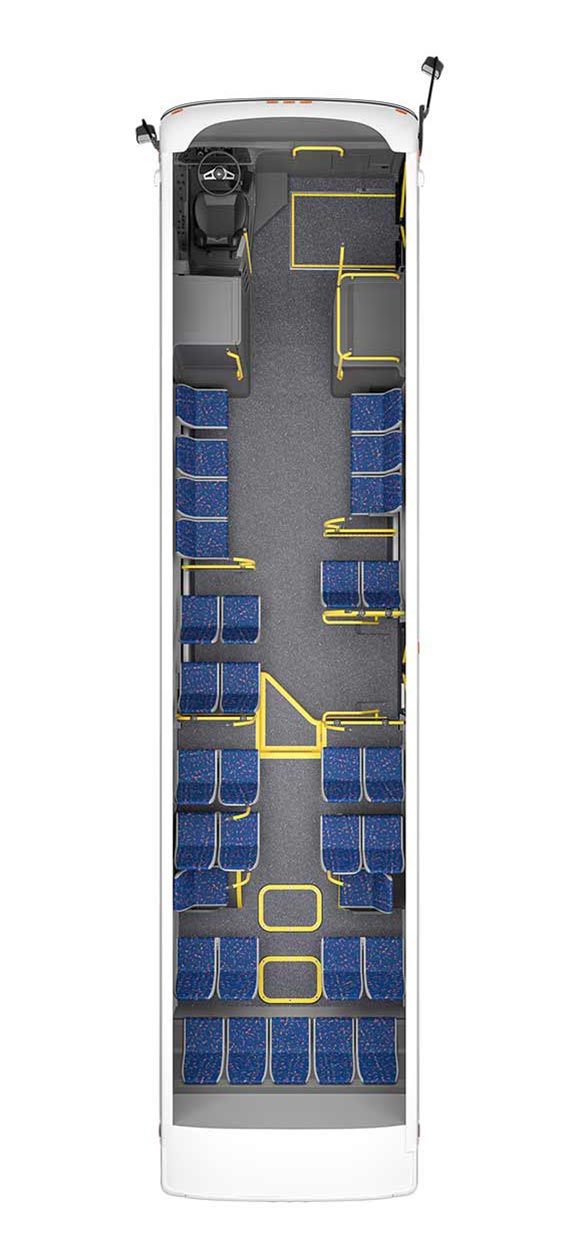Transitioning to a zero-emission future.
Hybrid-electric buses enable the critical transition step in the evolution to zero-emission mobility. They can immediately reduce greenhouse gas emissions and are a safe and reliable way to move people through the community while contributing to cleaner air.
Leading innovation in hybrid-electric mobility
New Flyer has been leading innovation in hybrid-electric mobility for over 20 years, supplying more hybrid buses to the North American industry—in more configurations—than any other manufacturer.
Floorplans
Built on the proven Xcelsior® transit bus model.
-
Significant reductions in transmission and brake maintenance, resulting in fewer service bays, parts and required fluids.
-
Fuel Economy
Improved fuel economy by 10-29% compared to conventional buses, dependent on route deployment.
-
Better passenger experience through smoother acceleration, a quieter ride, and improved air quality.
How it works.
New Flyer hybrid buses are the most powerful vehicles in their class, capable of speeds up to 65 mph while carrying maximum loads. Acceleration is quick and smooth for improved passenger experience and safer in-service responsiveness.
Dual-sided Boarding Option.
New Flyer offers an optional three-door configuration that includes a street-side door for bus rapid transit (BRT) application. Available on all Xcelsior® 40-foot and 60-foot buses, the three-door bus design ensures faster, more flexible BRT platform boarding and enhanced passenger experience.

Benefits of dual-sided doors:
- A center median can become a platform with a single station for both directions
- Curb lanes are freed up, making for an uninterrupted flow of vehicle traffic along the right-side curbs
- Left-side doors bring new options for one-way streets or dedicated right-of-ways
- New designs for BRT stations are now possible with faster boarding and de-boarding
.
Quick measurements.
|
|

















